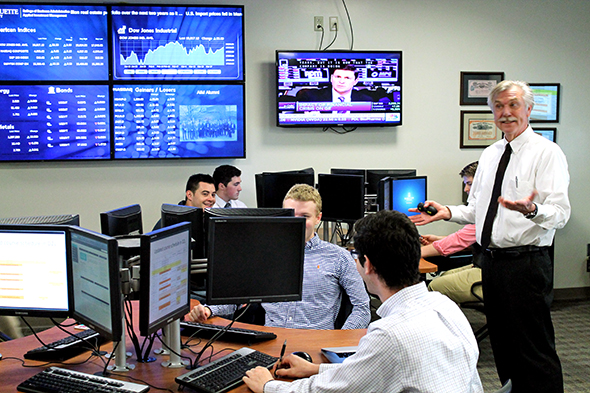Unilever ADR (ticker UL): The Firm with the Best Opportunity to Gain Share vs. P&G as the US Dollar Rises Versus Euro in 2016
By:
Joel Kretz, Student Analyst at Marquette University
Disclosure:
The AIM International Equity Fund currently holds this position. This article
was written by myself, and it expresses my own opinions. I am not receiving
compensation for it and I have no business relationship with any company whose
stock is mentioned in this article.
Summary
• Credit Suisse
upgraded Unilever to neutral from underperform in December, while Deutsche Bank
boosted EPS growth estimates upwards, lending to increasingly better prospects
for the company.
• Top shareholder,
Manning & Napier Advisors, LLC, and individual insiders increased their
respective positions in UL in Q3.
• Management has
indicated that its ice cream brands are poised to benefit from warmer
temperatures in North America and the southern half of Europe resulting from El
Niño.
• UL could be heading
to new 52-week highs on the back of a rising USD resulting from the Fed rate
hike that will likely force the Bank of England to hold off on raising its rates.
• Unilever’s main
competitor, Procter & Gamble, will be negatively impacted as a result of the Federal Reserve
rate hike driving the USD upward, leaving an opening for Unilever to gain market share.
• Q3 sales results
highlight turnover increasing by 9.4%, underlying sales growth of 5.7%
(primarily on volume), emerging markets underlying sales growth of 8.4%
(primarily on volume), and a positive currency impact of 2.9%.
Unilever
(NYSE: UL) is the company in the best position to gain on its
American competitor, Procter & Gamble (PG). PG’s foreign sales will likely
be severely and negatively impacted by a rising USD that would typically follow
a Fed Funds rate hike. Procter and Gamble’s management indicated a few months ago
that their Q2 revenue growth experienced a 600 bps deterioration because of the
already strengthening USD. UL is poised to take market share away from PG as a
result given the majority of UL’s revenue already comes from the United States
(13.8%).
UL’s main competitor
outside of PG is Nestle, who actually has the highest market share between the
three (34.76%); yet its product suite is less correlated with PG and UL’s. PG’s
market share is second highest (34.76%) with $83,062 million in revenues.
Assuming a 2.9% positive currency impact going forward for UL and a 6% negative
currency impact going forward for PG produces a changing market share landscape.
In theory, UL’s cost of
goods sold would decrease with falling European rates and PG’s cost of goods
sold would increase with rising American rates. When considering the U.S.
market, UL produces in Euros, Pounds, and Yen, and sells in USDs. PG produces
in USDs and Yen, and sells in USDs. Given the two companies products are close
substitutes, people will likely be willing to switch shampoo brands, for
example, if it is relatively cheaper for them to buy from UL than PG.
What
has the stock done lately?
The stock has been
trading more actively over the last month than it has over the last three
months (1.4 million shares per day vs. 1.2 million shares per day). This is on
the back of ongoing commentary coming out of central banks in Europe and the
United States. It appears that investors are waiting to see what the Bank of
England’s next move will be after the Fed.’s decision next week given the stock
has not moved much since mid-October, trading in a range of ~$42.00-$44.00. Watch
central bank moves in the coming weeks as they will impact UL in the
short-term. Once clarity comes out of global central banks, the stock should
begin rising again based on continued solid fundamental performance and not be
on “hold” by traders and investors any longer.
Past
Year Performance: UL’s price has increased 4% in value
and the stock’s total return is 7% over the past year; but the stock
continues to be undervalued by Street estimates given their rising estimates.
The stock’s 52 week price range is $38.60-$46.19. Back in August, Goldman Sachs
downgraded UL to sell from neutral and Unilever’s bond ratings were adjusted
downward slightly by Moody’s. The stock took off in September on strong macro
numbers, upgrades on the Street, ECB QE talks, and the acquisition of a new
Italian gelato brand on October 1, 2015.
Source:
FactSet
My
Takeaway
Unilever is poised to
take market share away from Procter & Gamble. The top UL shareholder and
insiders have been increasing their equity positions which indicates that the
stock is undervalued and/or poised to take off. I believe that both are the
case given analyst valuations of the stock in addition to factors including,
but not limited to, El Niño’s impact on their Ben & Jerry’s brand (and
other ice cream/gelato brands), currency impacts, and my observation that the
stock price has been on a virtual “hold” as the markets anticipate interest
rate moves by global central banks. With the Fed's rate increase it is likely that the Bank of
England will hold rates, and with the European Central Bank continue easing its monetary
policy (as I predict all will be the case), Unilever’s stock will take off over
the course of the next month and well into the New Year. In my opinion, UL is a stronger stock presently than P&G.








